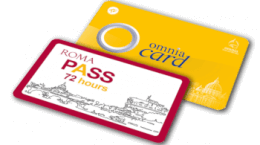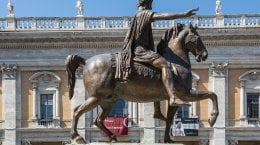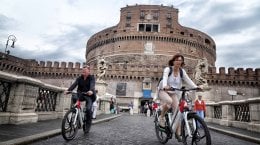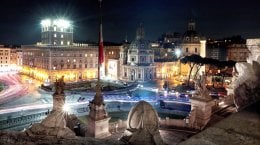Official Rome and Vatican ticket reseller
Galleria Borghese
The Borghese gallery is in Piazzale Scipione Borghese 5, inside the Villa Borghese Pinciana in Rome, Italy.
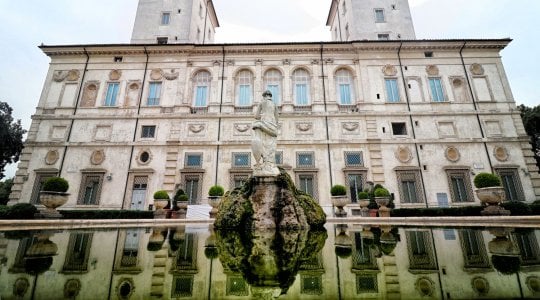
description
On the Roman hill of Pincio, immersed in one of the largest parks in Rome, Villa Borghese houses one of the most famous art collections: the Borghese Gallery.
In the abode that belonged to the noble family in the 14th century, from which the villa takes its name, many of the masterpieces of Italian art are kept: paintings and sculptures of the most famous artists such as Raphael, Tiziano, Caravaggio, Gian Lorenzo Bernini and Antonio Canova. In here there is the precious collection of the Cardinal Scipione Caffarelli (1577-1633), nephew of Pope Paul V, gathered between 1576 and 1633.
The Borghese Family and the Villa on the Pincio
The Borghese are known to history for having brought Paul V to the papal throne, in 1605, and thus to begin a rapid ascent towards power that allowed several exponents of the family, for centuries, to get rich and hold roles of power. Scipione Borghese, nephew of Pope Paul V, nominated cardinal, was a patron and great admirer of Gian Lorenzo Bernini, his protégé. It is to him that we owe the construction of Villa Borghese and the precious collection of works of art preserved in it.
The Villa was built at the beginning of the 17th century on a plot of land of the family, to which over time other lands were annexed until reaching the current extension. Among the nine entrances to the park of Villa Borghese, which allow access from the Pinciano, Flaminio and Salario zones, the monumental entrance is on Piazzale Flaminio.
The construction of the Villa, designed by Flaminio Ponzio, was completed by Giovanni Vasanzio, following the typical architectural layout of the suburban villas of the 16th century, following the example of Villa Farnesina and Villa Medici. The structure of the villa is divided into volumes and protruding bodies connected by a portico, the façade is embellished with reliefs and sculptures in the successful attempt to anticipate and reproduce, the richness of the works kept inside which had already been successful outside. In the 17th century, the architects Giovanni Vasanzio and Carlo Rainaldi were responsible for the construction of a series of buildings, annexed to the villa, including the Uccelliera and the gardens.
The architect Antonio Aspucci, in the following century, was instead the author of a radical renewal of the decorative apparatus, when, by the will of Marcantonio IV Borghese, another well-known patron of the Borghese family, he called famous painters to work at the villa, such as Christoph Unterberger, Domenico Corvi, Nicolò Lapiccola, Anton von Maron, Giuseppe Cades, Tommaso Maria Conca, Mariano Rossi and famous sculptors such as Vincenzo Pacetti, Tommaso Righi, Agostino Penna.
Galleria Borghese: a splendid collection of Italian art
Among the Baroque halls, the works of art collected by the Borghese family constitute what has been defined for centuries as one of the most important exhibitions in Italy and around the world.
His love for art led Cardinal Nepotis Scipione Caffarelli Borghese, not only to address the best artists of the time to whom he commissioned works for himself, but also to get hold of numerous paintings and sculptures. The passionate collector could boast as many as 100 paintings already in 1607, including some of Caravaggio’s early works. In 1608, he bought another 71 paintings by Cardinal Sfondrato, including the painting by Titian, Amor Sacro and Amor Profano. Scipione even managed to seize the opportunity to have among the pieces of his collection, a work barely rejected by the pope: Caravaggio’s Madonna dei Palafrenieri, commissioned from the artist to be exhibited in St. Peter’s.
Works by Raphael, such as the Deposition Baglioni, by Titian, Correggio, Antonello da Messina, Giovanni Bellini also belong to the collection of the Borghese Gallery.
Bernini’s sculptures are fascinating; He was the one who managed to give an incredible effect of softness to the hard marble, in which Pluto’s fingers sink in an attempt to kidnap Proserpina (Il ratto di Proserpina, 1621-1629) and which he gave, breaking every pattern predetermined, precise expressions of fear, pain, anguish to the sculpted faces; for example a tear is seen on Proserpina’s face. Another wonderful work by the genius Bernini, which can be admired here, is the sculptural group of Apollo and Daphne.
The sculpted groups mentioned above were performed at the explicit request of Cardinal Scipione, as well as the works depicting the Capra Amaltea, Enea and Anchises.
In the 18th century, Prince Camillo was the patron of the Borghese family, who married Napoleon Bonaparte’s sister, Paolina. Another masterpiece that enriches the collection is, in fact, the marble statue commissioned by the same to Antonio Canova, precisely on the occasion of the wedding: Paolina Bonaparte is depicted as Venus Winner on a triclinium, where you can admire the folds of the mattress that are carved because of the weight of the woman.
These and other works such as those by Rubens and Botticelli are displayed in the rooms on the upper floor, while the ground floor is dedicated to classical archeology. In all there are 20 rooms that can be visited, some works are also exhibited in the porch and in the entrance hall.
In addition, there are another 260 paintings kept in the Borghese Gallery’s storages, which can only be visited upon reservation.
opening time
Tuesday to Sunday 09:00 a.m. to 7:00 p.m. Last entry 5:00 p.m.
Closed on Mondays, December 25 and January 1
Reservations required: +39 06 328 10
how to get there
The entrance to the Borghese Gallery is located in Piazzale del Museo Borghese, at number 5. It can be reached by the Metro Line A; the nearest stop is Piazza di Spagna Metro Station.
Urban buses, on the other hand, allow you to reach the museum by many busses such as: n.5, n.19, n.52, n.53, n.63, n.86, n.88, n.92, n.95, n.116, n.204, n.217, n.231, n.360, n.490, n.491, n.495, n.630, n.910 and n. 926.
Booking is recommended to visit the museum, moreover, for security reasons, access is allowed in visits lasting a maximum of two hours, of around 360 people at a time. The entrance ticket can be purchased online or by booking over the telephone. It is possible to purchase the ticket also on site providing that it is half an hour before the scheduled entrance, as described in the shifts described above.
Detailed information is available on the website of the Galleria Borghese museum.
In summer, as well as during the usual opening hours to the public, evening visits are permitted from 7.00 p.m. to 10.00 p.m. from 6 July to 6 October.
In the area, it is also possible to visit the National Gallery of Modern Art, the churches of Santa Maria della Concezione and Santa Maria della Vittoria, Piazza Barberini.
nearby attractions
Piazza del Popolo
